
#701

Posted 23 October 2009 - 01:48 PM
My life fades, the vison dims. All that remains are memories... from The Road Warrior
#702

Posted 23 October 2009 - 07:38 PM
What about regular old machinist's dye, the stuff you use for marking and layout? I don't know how well it would hold up or how it would be to try and put it on evenly, but it should help prevent rust.
-john
#703

Posted 23 October 2009 - 11:21 PM
I intend to live forever! So far, so good.
#704

Posted 24 October 2009 - 10:54 AM
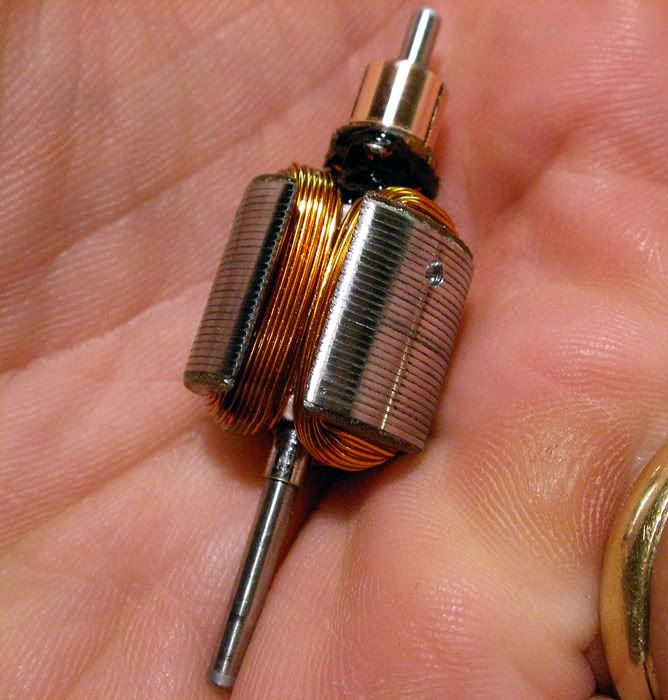
I also wanted to try the arm in a can that I installed ball bearings in, but was unsure about how it would run since all the bearings I have seem a sloppy fit by today's standards. So I had a Champion can that I had to strip because the paint was wrecked. When I stripped it, I found that the can was in perfect condition, so instead of repainting it, I polished the thing up. I drilled/reamed the brass bushing retainer and solderd-in a bearing and I really like the way it looks all shined-up. Anyway, the arm runs really nice and this can has regular Mabuchi 36D magnets (all I had), so I think that with Arcos I can get even more out of the thing. I still have to see about soldering the brush hoods and I might also try winding a set of heavier springs to see how that affects things.

-john
#705

Posted 24 October 2009 - 11:26 AM
Gosh, just looking at those copper winds lined up perfectly symmetrical is... is? ... makes me... ? .... well, I could just stare at it for a long time!
Remember, two wrongs don't make a right... but three lefts do! Only you're a block over and a block behind.
#706

Posted 24 October 2009 - 11:41 AM
#707

Posted 24 October 2009 - 01:00 PM
I wound a set of springs for this motor using .016" electric guitar strings as spring stock, figuring that the stock springs were kind of weak. Sometimes you can hear when a motor spins up that as it goes higher it gets to a point where it doesn't seem to be running proportionally faster as you increase the voltage. Assuming you don't have arcing, I think this can be a sign that the springs aren't up to the task of keeping the brushes in solid contact with the com. These springs are significantly stronger than the factory 36D springs and now the arm spins with real "oomph"!, drawing about 1.75 amps as opposed to 1 amp or less before. I think that's a good compromise, but just as added insurance I added my one and only set of Steve O'Keefe spring post protectors. Like everything he does, these are just beautiful...who'd have thunk that something as mundane as post protectors could be so lovely!
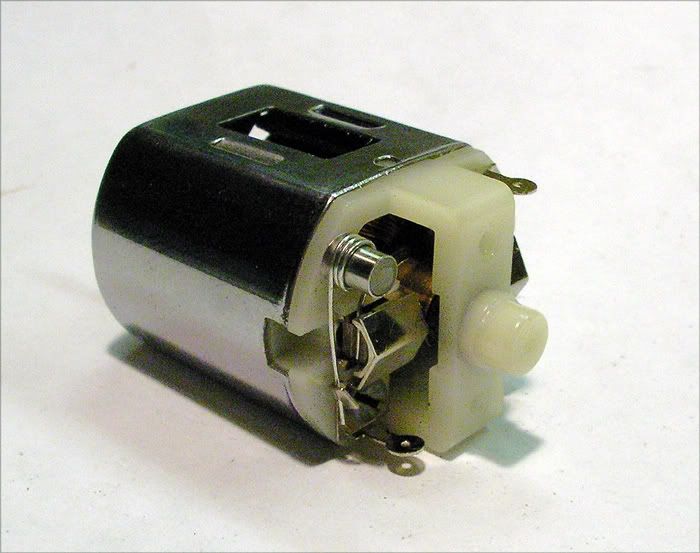
I'm going to keep this setup and this arm just as-is as the stock magnets seem entirely appropriate here, and I'll save the other can with the Arcos for another project. Now that I'm comfortable with where this is headed, I'll tear it apart so I can clean it all up, drill the endbell for screws and make sure the arm is centered in the field. I like this motor!
-john
#708

Posted 24 October 2009 - 01:16 PM
One thing I left out when talking about using Sharpie or Magic Marker...something that Bill mentioned...how long the colors last, especially when you use motor spray.
I used to clear coat the stack with VHT High Temp clear, (after masking the ends of course) and that would keep the motor spray from washing off the colors..at least for a while.
I also tried a 15T of 22 on a Mura blank...it was a burned up Challenger I that a friend gave me...
I was so inexperienced at it that I neglected to tie around the comm or "cap" it w/ the dental floss that I used to "tie" it...
It didn't last long...I can still remember the comm segment bouncing off my forhead as I zinged it up on my battery charger
Tom Hemmes
Insert witty phrase here...
#709

Posted 24 October 2009 - 01:45 PM
I've blown-up my share of coms both as a kid and even still today, so I know what you're talking about
-john
#710

Posted 25 October 2009 - 10:18 AM
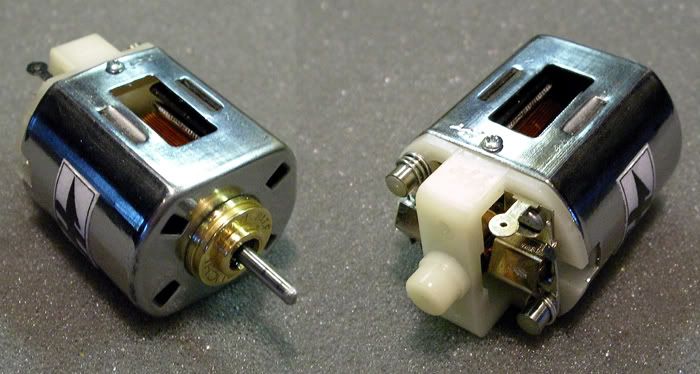
-john
#711

Posted 27 October 2009 - 06:04 AM
1)Don't hear from me in not too long
---OR---
2)You hear cursing coming from the direction of Long Island because I didn't take something into account
-john
#712

Posted 27 October 2009 - 07:15 AM
Speaking of 3/32 shafts, have you ever tried to rewind a 5 pole arm? All this 36D talk got me thinking about the Ram-Boochie, which was the Ram hopup kit for the 36D with their 7-pole arm and a Pittman style endbell... 7 poles may be a lot, but a 5 pole arm could be interesting (not that I've ever dared try one...). I've found a few interesting experiments with 5-pole Pittman arms in 16D cans as well (and I think Rick/DC65X has tried this as well - I believe he's still cursing in fact...).
Just a thought...
Don
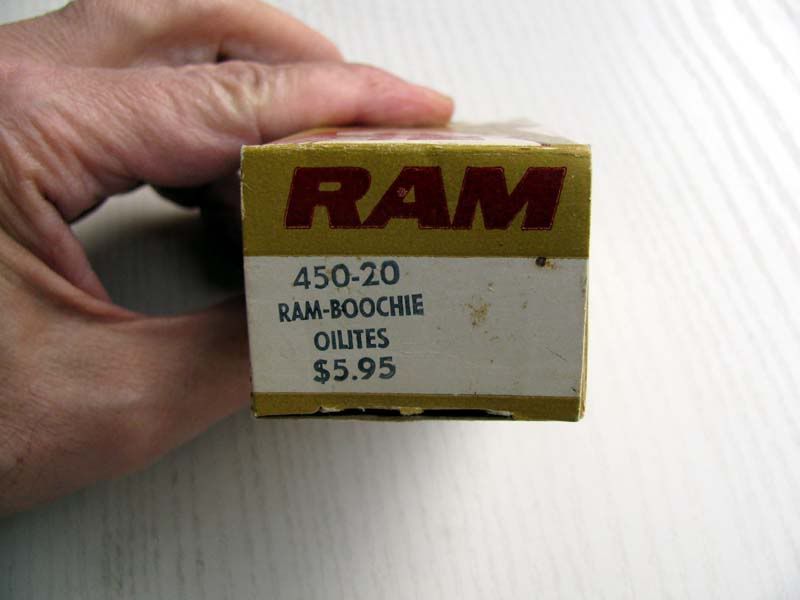

#713

Posted 27 October 2009 - 07:55 AM
Sir, I've seen eurosport racers here turn down the end of their eurosport arm from 2mm to 1.5 to fit new 6 tooth euro pinions so why couldn't you do the same??
These are expensive Lee Gilbert motors that they just use a dremel and a cut of disk to slowly take the end of the shaft down. They spin the motor slowly as they do it. Beats drilling out a pinion.
"Try it, you'll like it!"...
See ya!!
GTP Joe Connolly
In theory there is no difference between theory and practice.
In practice there is.
#714

Posted 27 October 2009 - 07:59 AM
I've never even held one of those motors in my hand much less rewound one :-) They look difficult because of the narrow gap between the poles and I seem to remember that the wind isn't supposed to be a regular series-type wind or something. Don't you wind one pole and then skip the next and wind the thrid and then skip and then wind the fifth and then skip to the 2nd, 4th or something like that ...or am I mistaken??? They look like very cool motors though and a five pole seems like it ought to be a smooth(er) running motor if the rewinder (moi) didn't butcher the thing
-john
#715

Posted 27 October 2009 - 08:04 AM
Hi John,
Sir, I've seen eurosport racers here turn down the end of their eurosport arm from 2mm to 1.5 to fit new 6 tooth euro pinions so why couldn't you do the same??
These are expensive Lee Gilbert motors that they just use a dremel and a cut of disk to slowly take the end of the shaft down. They spin the motor slowly as they do it. Beats drilling out a pinion.
Hi Joe,
Actually, slightly opening the hole of a pinion (remember these pinions are far larger than "normal") should be a snap. Also, many of the 36D pinions are the setscrew type with gobs of extra material...even though we're only talking about a few thousandths. Another thing is that what we have here is a shaft that's normally slightly undersize for the available bearings...we wouldn't want to be turning down the shaft...we'd want to be adding material to the shaft
-john
#716

Posted 27 October 2009 - 10:14 AM
I have done both 5s and 7s and, really, they aren't as difficult as you try to talk yourslelf into them. I mean as a lad in 63 I was rewinding the pittman 703/4s for the longer tracks.
I have been pondering your bushing problem, john. And I am not sure what is happening. I haven't seen that and I wonder at the bearings we are doing. I remember that, in the day, one could find 3/32 bushings and bearins that were alternately .062 625 and 63. But I just haven't had that problem in recent times. One nightmare of the time was the MPC "high rise, which was .0635 and .....
Perhaps we need to step back here. Start with the arms you have, meter them, meter the bushings then talk to Rick and Duffy who have the equipment to, perhaps actually solve this stuff for us!
But I am wondering. I mean I have survivors that I still run!
Fate
3/6/48-1/1/12
Requiescat in Pace
#717

Posted 27 October 2009 - 11:11 AM
Thanks
JROB CUSTOM SCREEN PRINTING
Grass Valley CA
530-274-9707
www.jrobtees.com
#718

Posted 27 October 2009 - 12:18 PM
I have been pondering your bushing problem, john. And I am not sure what is happening. I haven't seen that and I wonder at the bearings we are doing. I remember that, in the day, one could find 3/32 bushings and bearins that were alternately .062 625 and 63. But I just haven't had that problem in recent times.
Hi Rocky,
I don't have a "bushing problem"...it's the bearings that cause the problem...but it's really not THAT much of a problem, more of an annoyance. I have worked on some 36D motors for others that had (what I assume) were factory bearings installed that were a perfect fit for the regular 36D arm shaft...actually even a little snug. However, I haven't found any on my own that fit properly. I have tried several different sets of vintage bearings and those have actually all been 3/32" ID bearings which are naturally a loose fit for a 36D arm shaft which is under 3/32" by several thousandths. If I hadn't seen some bearings that fit properly, I would have thought I was just expecting too much precision as the Mabuchi bearings were also a sloppy fit. I already have installed a set of vintage bearings in the 36D above and even though they aren't a precise fit, they seem to work just fine.
Perhaps we need to step back here. Start with the arms you have, meter them, meter the bushings then talk to Rick and Duffy who have the equipment to, perhaps actually solve this stuff for us!
It's really pretty simple, and I have carefully measured the shafts from many 36D motors and they all come out exactly the same (which is to say under 3/32"). These all fit the factory bushings very well, and all fit any and every bearing I have tried rather loosely. It's really not a matter of measuring anything and it all boils down to:
1)36D arm shafts are under 3/32"
2)Vintage bearings from three different manufacturers that are supposed to be for this application are all sized for 3/32".
Thanks for the thoughts Rocky, but I'm more than half way through a solution anyway and so far so good.
-john
#719

Posted 27 October 2009 - 12:28 PM
I guys , I have a question about the motors, but NOT being used in a slot car, I do race slot cars but I also have a few RC cars, in one case I have a XMOD rc crawler that runs on 6 volt power, I have tried several motors but none have enough torque, I would like to try and rebuild a motor ( I have several laying around and I have rebuilt a few of my 16d and 12x motors, I AM NOT A MOTOR BUILDER, just a MOTOR BUILDER LEARNER. ) anyway would I use more or less windings to create the low end ( slow ) torque I am wanting. AND do you have any other input for me ?
Hi Robin,
I'll offer what little I can and I'm sure others with more/better knowledge will chime in as well.
1)I would start with the assumption that the magnets and the arms in your motors are what they are (winds, stack height and diameter, magnet strength and gap etc.) because they were designed to a purpose. If all the motors you have don't have enough torque, my first assumption would'nt be the motor design at all since several different motors seem lacking...I would suspect gearing and would try a higher numerical gear ratio ("lower gears").
2)Assuming the magnets are up to full strength (?), I would also say that a hotter wind (less turns of thicker wire) will give you more RPMs and less torque because there's generally no free lunch. To a certain degree, more RPMs can also help in the punch department because of the ability to run higher numerical gear ratios. If there is such a thing as better magnets for your motors that will produce a stronger field, then a hotter wind with different gearing may produce the desired effect. The tradeoff will be that the motor will draw more current (and get hotter too) and in the case of a battery-powered car I would guess a significantly shorter run time before the batteries are discharged.
Like I said, there are others here who know much more about this stuff (Tony P for one)...the above are just generalities. Whenever you try and inmcrease the performance of a car, all the related pieces of the car can start to show their weaknesses.
-john
#720

Posted 27 October 2009 - 12:47 PM
For instant torque use a motor with less turns and a small pinion gear. This combination will convert the higher rpm wind up of the motor into instant low end punch. The powerband will be short but the low end will be there.
If you are looking for a powerful motor with a big broad powerband so you can go slowly than you need to use a motor with more turns.
Anthony 'Tonyp' Przybylowicz
5/28/50-12/20/21
Requiescat in Pace
#721

Posted 27 October 2009 - 01:25 PM
-john
#722

Posted 27 October 2009 - 02:05 PM
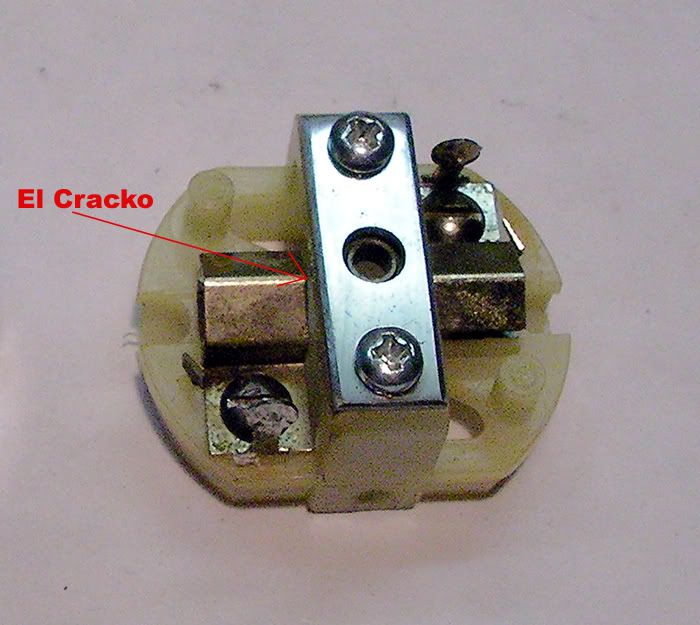
Even though this endbell had the square Champion bushing beforehand, the round recess was a perfect "snap-fit" for the new/vintage bearing
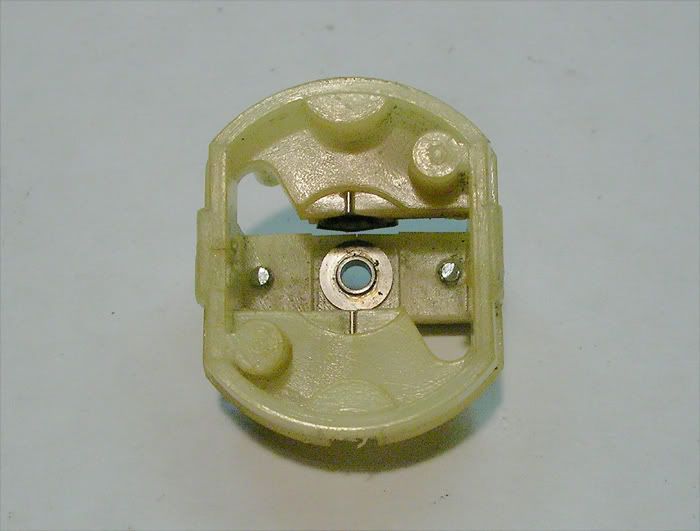
I did the normal body and fender job on the can (stripped it, filled-in the magnet tabs and can screw holes with solder that were top and bottom) and painted it "New Hampshire Special Blue" (I hope Bill doesn't get wind of this) after reaming the brass bushing boss and soldering in the new bearing.
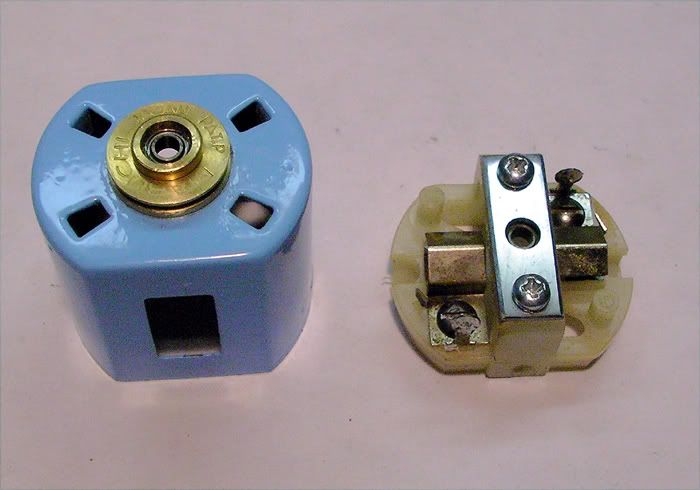
Arm is wound and in the easy-bake oven.
-john
#723

Posted 27 October 2009 - 02:10 PM
Thanks
JROB CUSTOM SCREEN PRINTING
Grass Valley CA
530-274-9707
www.jrobtees.com
#724

Posted 27 October 2009 - 03:34 PM

Installed it in the motor and it runs sweet! I have to take apart the endbell, clean up the hardware and solder the brush hoods, but wanted to try the thing first. Anyway, this is what I got before cleaning everything up.
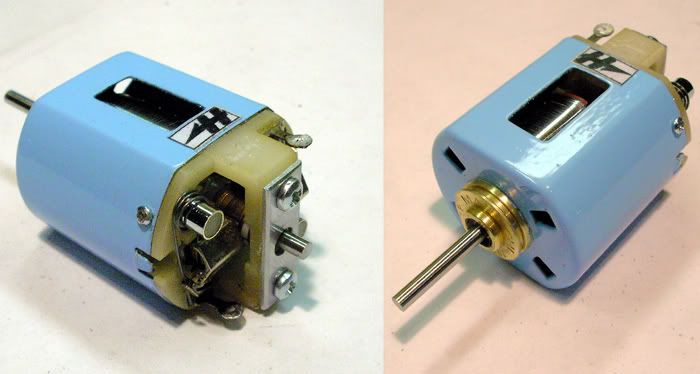
-john
#725

Posted 27 October 2009 - 04:30 PM
Paul Wolcott



 This topic is locked
This topic is locked













